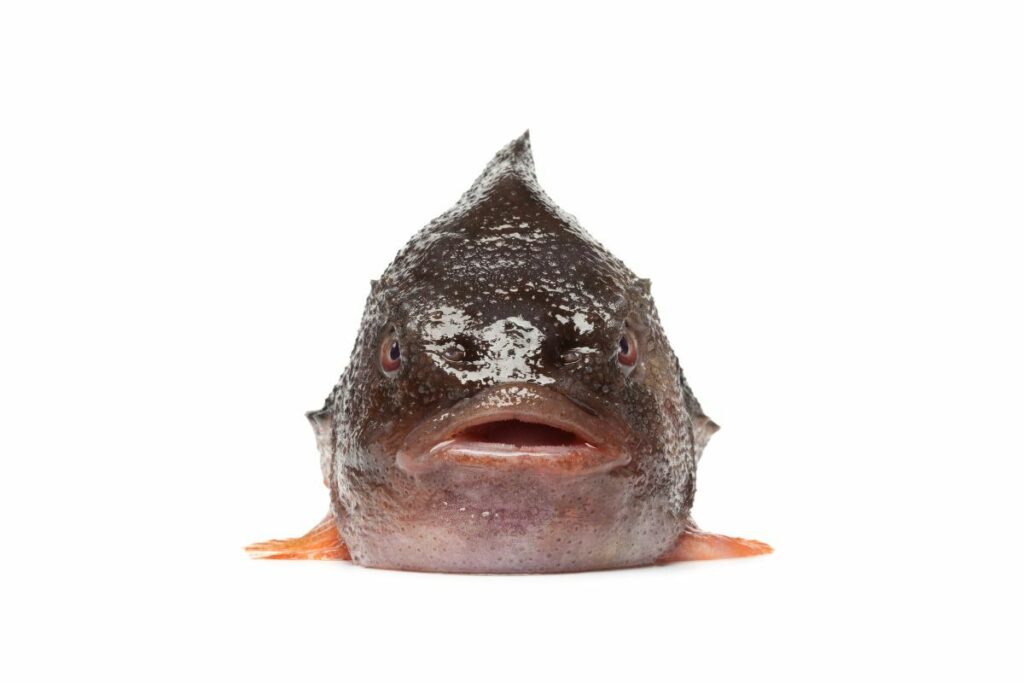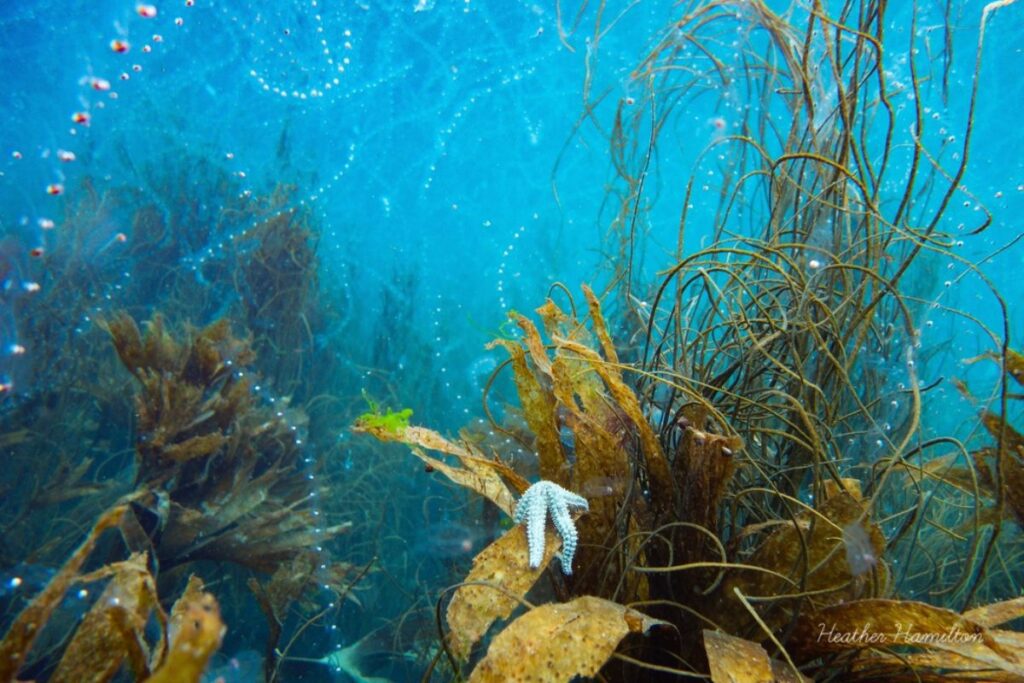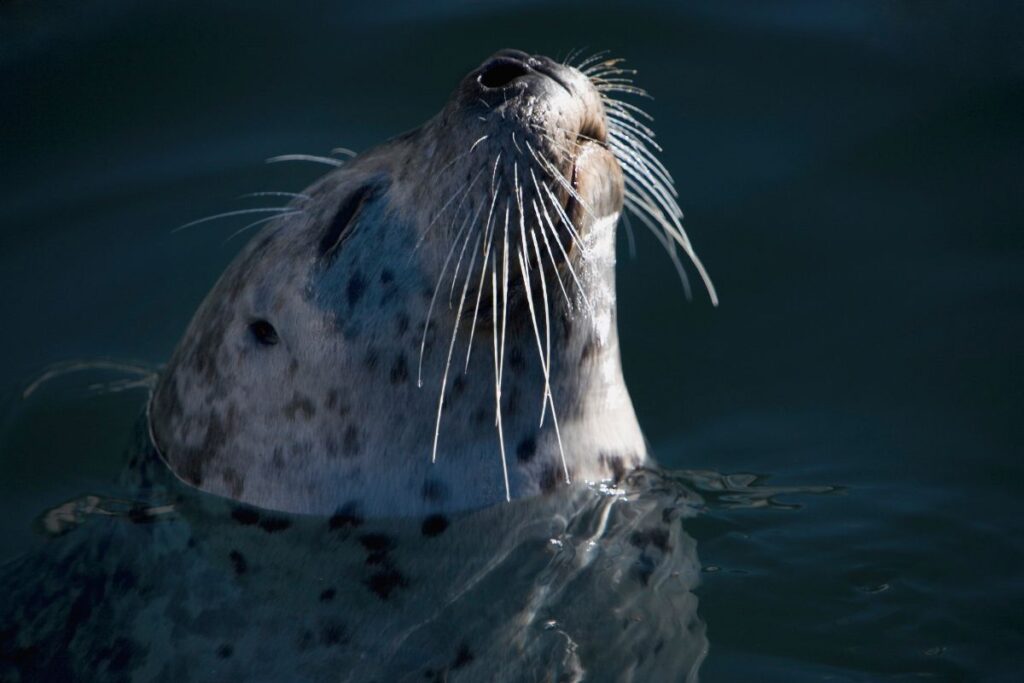Introduction to Cornwall’s largest sea creatures
The temperate waters around Cornwall are home to a variety of large marine species from the common sighting of the Atlantic grey seal, to the lesser seen basking shark. Some species are present year-round, with others visiting seasonally.
Why Cornwall’s waters attract marine giants
It is thought that the seas around Cornwall provide important habitat for cetaceans, along with feeding opportunities driven by primary productivity. Cornwall’s seas are affected by the Gulf Stream, which brings warm, rich, water from the south. With this comes extreme weather which churns the water and brings nutrients to the surface, allowing marine life to flourish.
The importance of conservation
Many of these ‘gentle giants’ of Cornwall’s seas are at the top of their respective food chains, and play a key role in regulating the marine ecosystem. With threats such as accidental bycatch, entanglement in discarded fishing gear, pollution, climate change, and boatstrike causing declines in many marine megavertebrate species worldwide, it shows the importance of appropriate conservation measures.
Basking sharks: Cornwall’s gentle plankton eating giants
Identifying basking sharks
The large, dark, triangular dorsal fin and tail tip of the basking shark breaking through the water’s surface is unmistakable. Reaching up to 12 metres in length, the second biggest fish in our oceans swims with its mouth open to filter feed on passing plankton.
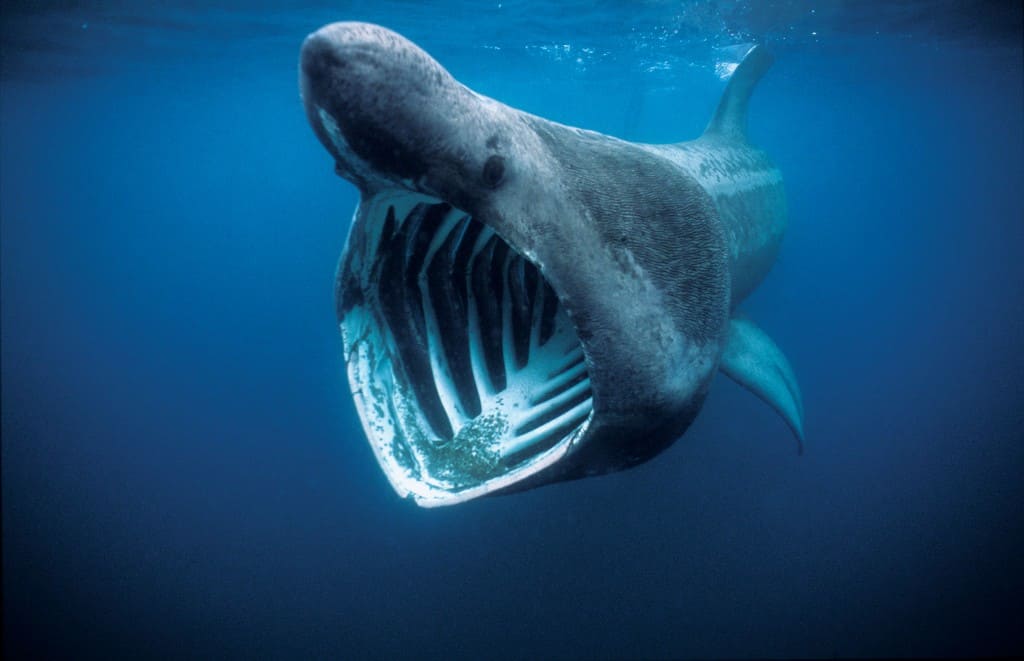
Best times to spot basking sharks
Basking sharks are most likely to be spotted during the summer months, when they congregate along thermal fronts in coastal waters. This is due to the presence of dense plankton at the surface, providing feeding opportunities. Though it is important to note that any delay in the onset of plankton productivity due to variability in oceanographic conditions could influence when basking sharks are most likely to be spotted around Cornwall. It is thought that basking sharks may still be present outside of the summer months, just utilising deeper waters, rather than surface waters.
Padstow Sealife Safaris’ basking shark encounters
Historically, basking sharks were a regular sighting around Padstow Bay, with fishermen telling stories of large aggregations close to Pentire Point. Basking sharks have since become somewhat of an elusive species around Cornwall. We still know very little about basking shark seasonal movements. Though a study that tagged basking sharks in the north-east Atlantic found sharks made one of three migrations: staying in waters of the UK, Ireland and Faroe Islands; moving south to the Bay of Biscay; or even further south to the Iberian Peninsula and North Africa.
Sunfish: the second largest bony fish on the planet
Sunfish sightings in Cornwall
The flat, circular body shape of the ocean sunfish, with its tall, dorsal and anal fin is indisputable. As the name suggests, sunfish are often spotted at the water’s surface, raising their body temperature in the sunshine after completing a deep dive to feed.
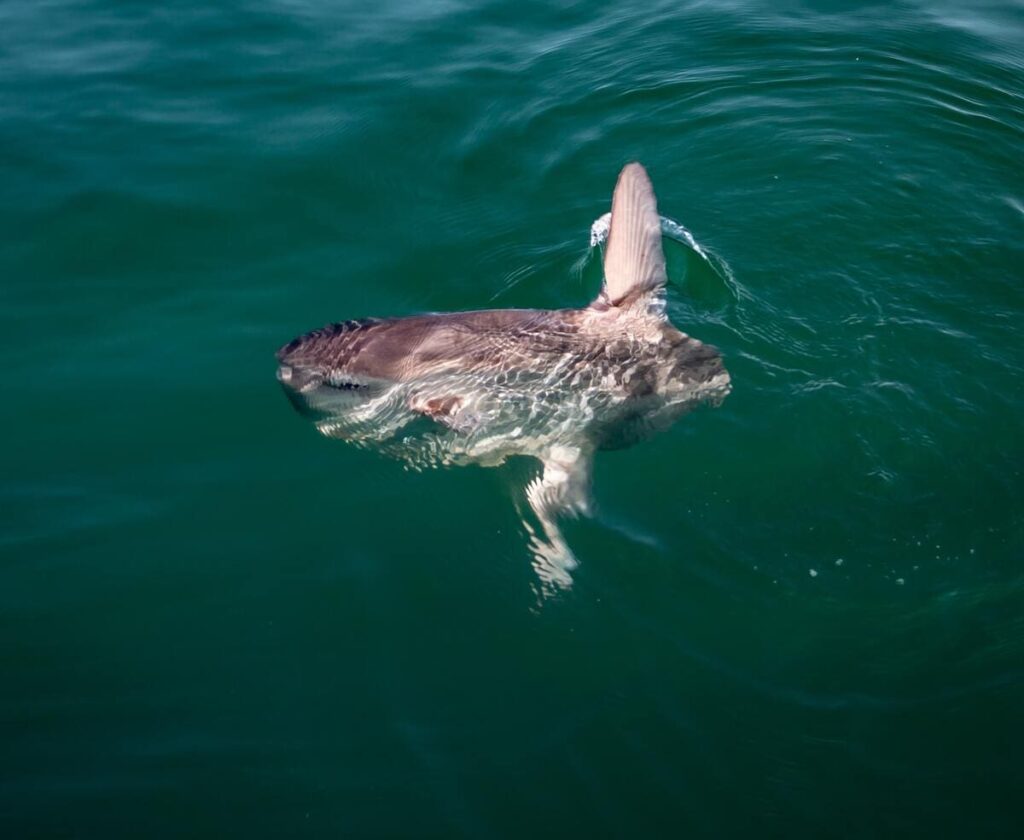
Habits and diets of sunfish
Juveniles and sub-adults feed on a wider variety of species including jellyfish, molluscs, crustaceans and small fish. Whereas large sunfish, more than one metre in length feed on salps and jellyfish. Sunfish are found in all oceans of the world though little is known about sunfish habitat preference. Studies suggest that sunfish migrate northwards to temperate waters in the summer, and south to warmer waters in the winter.
When to spot a sunfish
Correlating with this theory, sunfish are commonly spotted around Cornwall in the summer months. It is likely these migrations are driven by plankton productivity and sunfish play a key role in regulating jellyfish blooms.
Grey seals: Cornwall’s charismatic coast dwellers
Seal colonies around Cornwall
Atlantic grey seals are the most commonly spotted marine mammal species in Cornwall, with approximately 40% of the world’s entire population found around the UK. Depending on the season, grey seals can be found in varying numbers at the ‘major haul-out sites’ around the Cornish coastline. Greater numbers can be seen in autumn and winter due to pupping and breeding seasons. In spring, grey seals go through an annual moult to replace their fur. The moulting process is quicker if the seal is warm and dry, so grey seals can often be spotted hauled-out in spring. In summer, grey seals are infrequently seen around the coastline, often spending time offshore to feed.
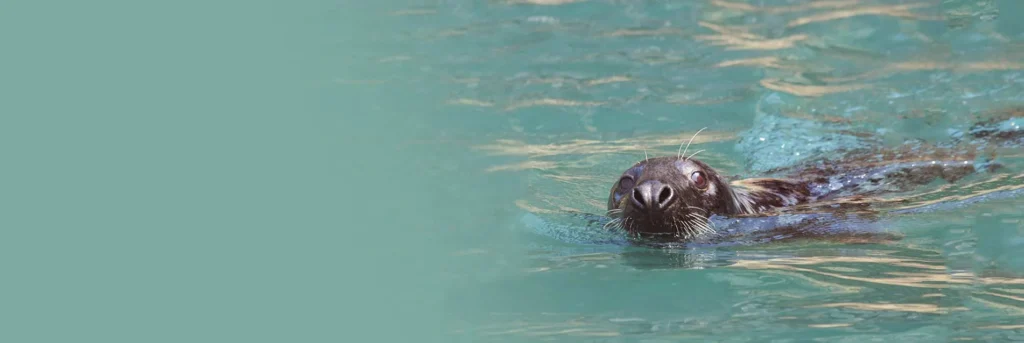
Seal watching etiquette
When watching seals, it is important to follow guidelines on behaving appropriately to allow for the best sightings. To give seals space and prevent disturbance, observers should remain quiet, hidden from view, downwind, at distance (100 metres is recommended), use binoculars/camera zoom and keep dogs on leads. If seals are disturbed it can interrupt their rest, cause unnecessary stress, waste energy and result in injury.
Padstow Sealife Safaris’ seal spotting adventures
Padstow Sealife Safaris one hour seal safari, or two hour sealife safaris offer a chance to spot grey seals around the coastline and out in open water. Grey seals are often spotted resting on the offshore islands close to Padstow, and feeding along the coastline.
Barrel jellyfish: the UK’s largest jellyfish
Identifying barrel jellyfish
Common off the south and west coast of Britain in summer, barrel jellyfish are the largest jellyfish species found in UK waters. However, barrel jellyfish are particularly common around the southwest where they can be found year-round. Barrel jellyfish can reach up to 90 centimetres in diameter, and 35 kilogrammes in weight. Due to their size, barrel jellyfish are also known as dustbin lid jellyfish. Barrel jellyfish are often pale pink, blue or yellow, and have eight oral arms containing small stinging tentacles.
Are barrel jellyfish dangerous?
Despite having stinging tentacles, the sting of barrel jellyfish is not thought to be harmful to humans. In fact, barrel jellyfish will actively dive or move away from motion in the water, meaning they would likely move away from a human. They feed on passing plankton, catching these microscopic organisms in their sticky arms.
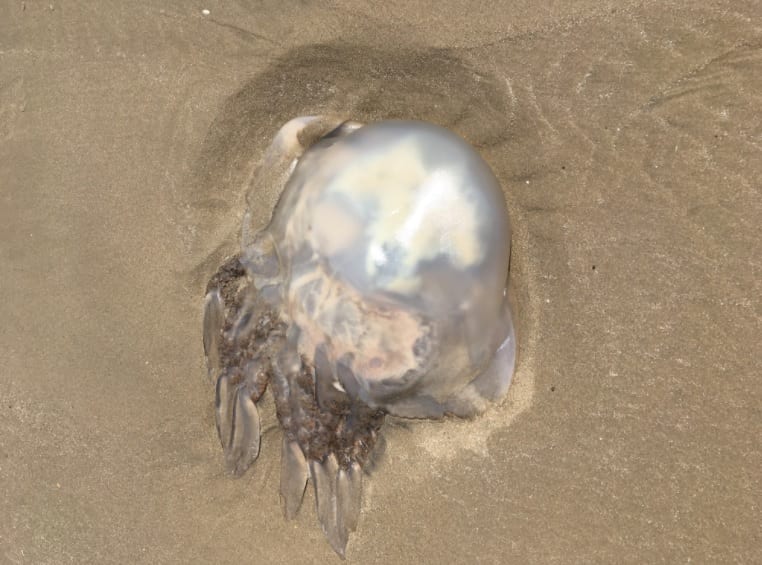
Humpback whales
How to identify a humpback
With a dark grey or black body, and a white underside, humpback whales are easily recognisable from their wing-like pectoral flippers and knobbly head. Adults can reach an astounding 17 metres in length, and 36,000 kilogrammes in weight.
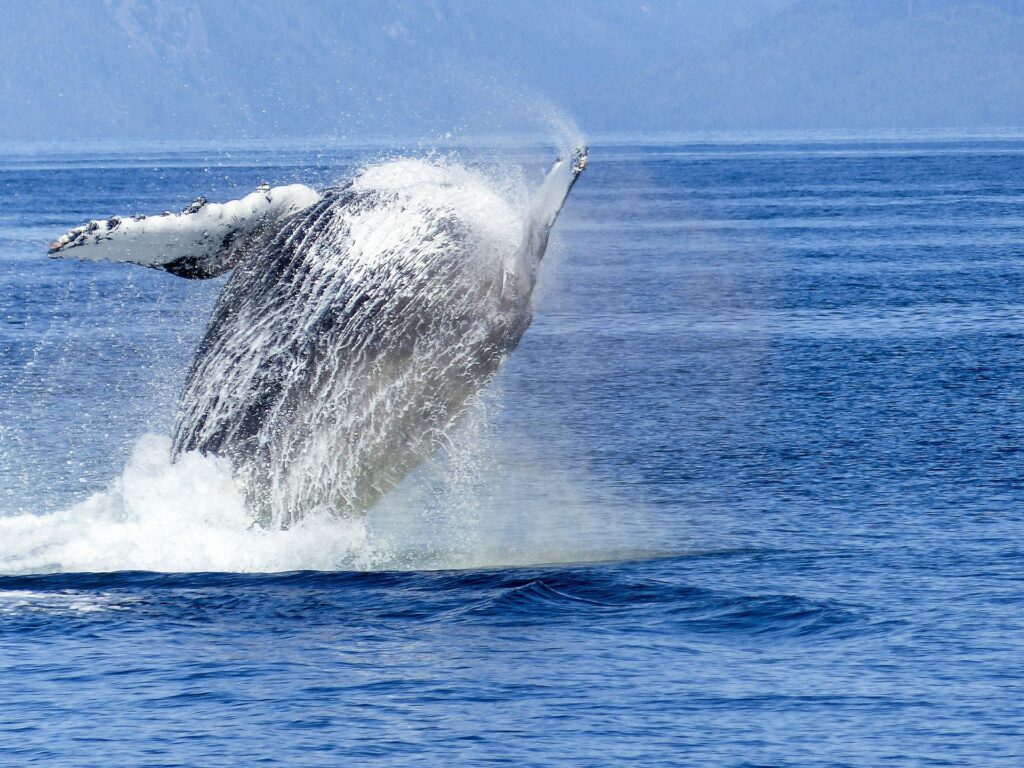
When can you see humpback whales in Cornwall?
Humpback whales are known for their active surface behaviour and can often be seen breaching out of the water entirely. Humpback whales are found in all the world’s major oceans, including the Cornish coastline. It is thought that humpback whales make seasonal migrations from mating and calving grounds in warmer, tropical waters, to feeding grounds in cold, productive waters. Most sightings of humpback whales around Cornwall occur between November and March, and appear to be increasing in number. Though it is important to note humpback whale sightings around Cornwall are still sporadic.
What do humpback whales eat?
Despite their huge size, humpback whales feed on small species including schooling fish, crustaceans, and plankton. Humpback whales feed by taking enormous gulps of water containing prey. Water is then filtered through their baleen plates and the prey is consumed. The size of the humpback whale means that approximately 1,300 kilogrammes of food is eaten daily.
Bluefin tuna: The giant deep divers
How big are bluefin tuna?
Atlantic bluefin tuna can dive to depths of more than 1,000 metres and maintain a warm body temperature. Bluefin tuna are built for speed with streamlined bodies and retractable fins to reduce drag. Reaching around 2 metres in length, and 250 kilogrammes in weight, bluefina tuna are one of the world’s largest and fastest fish species – achieving a top speed of 43 miles per hour.
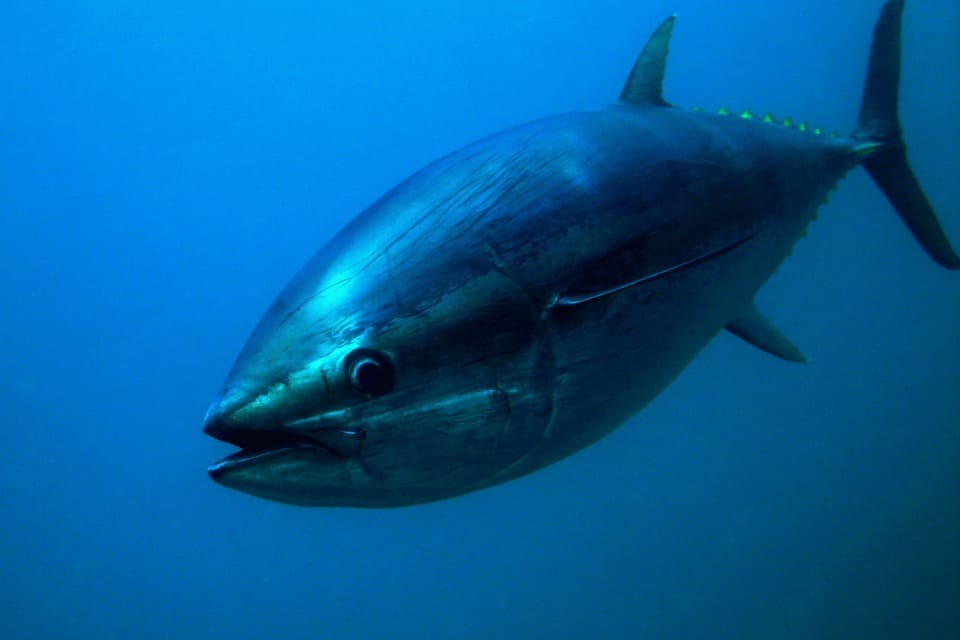
Sightings of bluefin tuna in Cornwall
Over the past decade, sightings of bluefin tuna around Cornwall have increased. Previously, no sightings were reported around the UK for more than 60 years due to overfishing for human consumption. This increase in sightings is likely due to improved fisheries management and strict quotas.
Habits of bluefin tuna
Bluefin tuna gorge almost constantly on small fish, crustaceans, eels, and squid. Bluefin tuna are highly migratory and follow seasonal changes in food availability and water temperature. These long-distance migrations can extend thousands of kilometres from spawning to feeding grounds.
Responsible wildlife watching with Padstow Sealife Safaris
Leaving wildlife as you found it is key with ecotourism. We understand that it is incredibly difficult to visit wildlife in its natural habitat and remain completely unnoticed, but we ensure that by keeping sensible speeds and distances when in the presence of wildlife, reading and responding to their behaviour, our impact on the marine life we are there to enjoy is kept to a minimum. This avoids disturbance or disrupting their natural behaviours. Education is another important factor of ecotourism. Not only do we engage passengers with interesting facts about the animals we spot, but we explain threats affecting their populations, and small ways in which individuals can help.
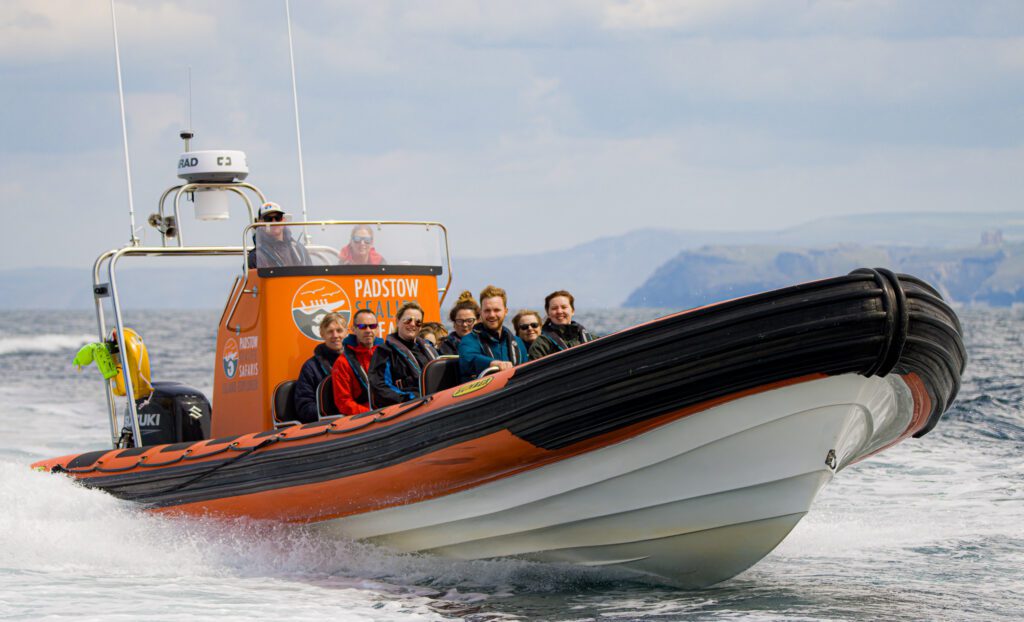
How you can help protect Cornwall’s largest sea creatures
You can help to protect Cornwall’s largest sea creatures by making responsible, well informed, and conscious decisions regarding any seafood you may consume. The impact of unsustainable seafood and destructive fishing practices reaches far beyond individual species, to all levels of the marine food chain. The Marine Conservation Society’s ‘Good Fish Guide’ has all the advice you need to make sure the seafood you choose is sustainable.
Summary
Depending on the season, different ‘gentle giant’ marine species can be spotted around Cornwall. We are fortunate to have temperate, productive waters that draw these massive species in to feed. This list is not exhaustive, with many other large species visiting the Cornish coast. Though it is important to note that ensuring these species are here for years to come relies upon sustainable food choices, reducing the impact of fishing on the marine ecosystem.
